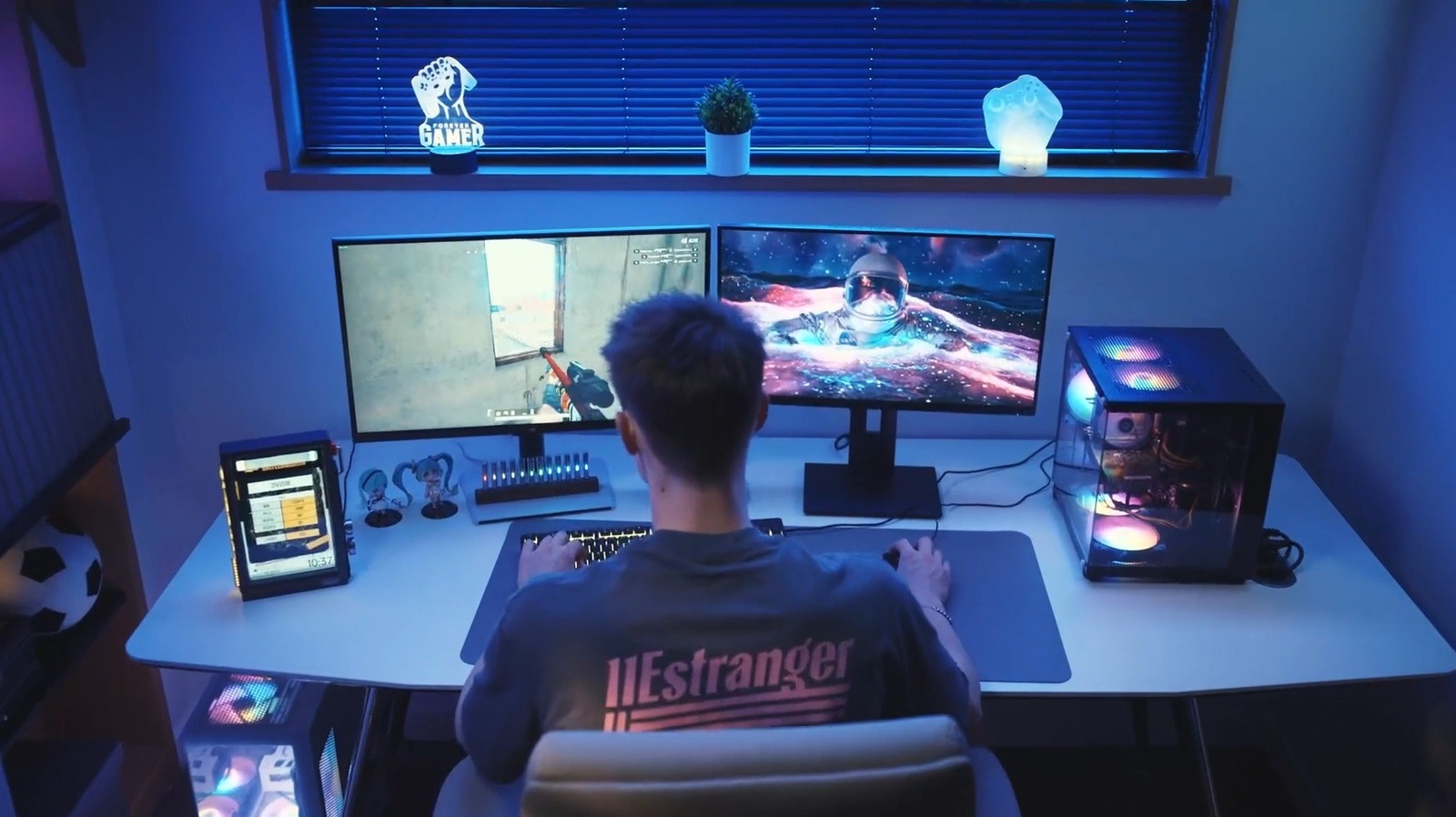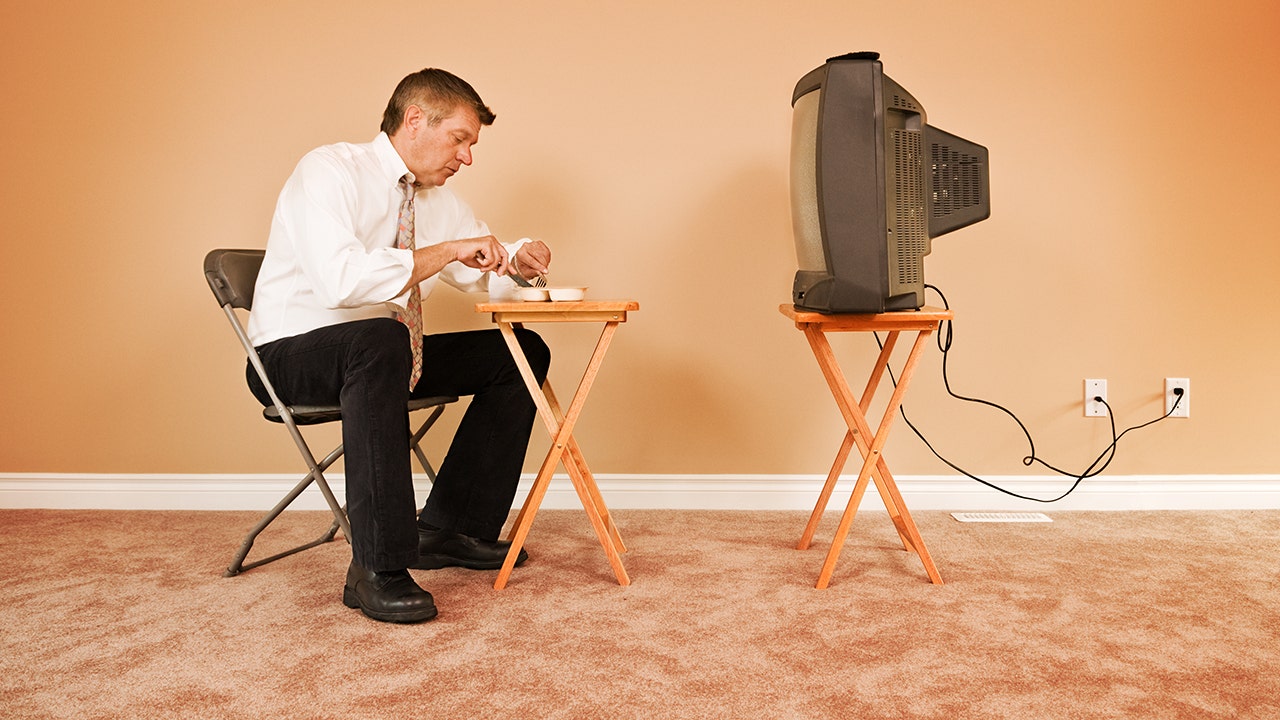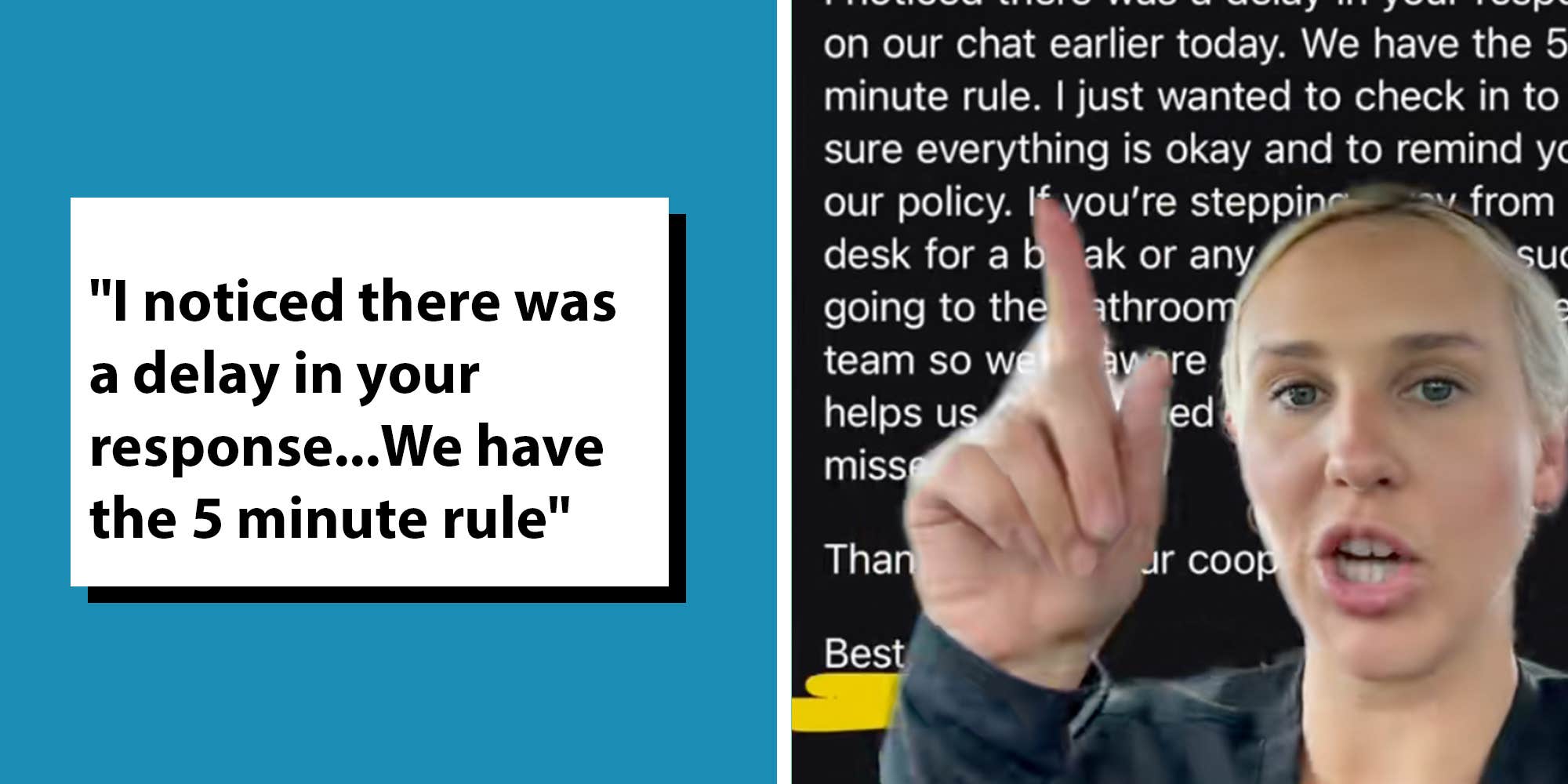#remote-work
#remote-work
[ follow ]
#return-to-office #productivity #workplace-policy #workplace-culture #high-paying-jobs #entry-level-jobs
fromForbes
2 hours ago10 Things Experienced Digital Nomads Wish They Knew Before Setting Off
You pack your laptop and book a one-way ticket to Bali. Three months later, you're back home, broke and burned out. The digital nomad lifestyle you dreamed about turned into a nightmare of bad Wi-Fi, lonely nights, and zero productivity. Maybe you thought working from paradise meant actual paradise. Maybe you believed the Instagram posts showing laptops by the pool. The gap between fantasy and reality hits hard when you're trying to run a business from somewhere the internet cuts out every five minutes.
Digital life
fromFast Company
3 days agoIs the retirement party dead?
When Greg Giczi retired in February, his company threw him a party. Giczi had spent 12 years as president and general manager of WNIT-TV, a public television station based in South Bend, Indiana. Public broadcasting isn't known for lavish budgets, so the party took place at the studio-a "big, open space with dramatic lighting," Giczi describes. There were appetizers, wine, and beer, as well as heartfelt speeches.
Retirement
fromAol
3 days ago6 Beautiful Places Where Americans Are Moving for a Simpler Life
Remote work has allowed people to live wherever they choose, no longer tied to urban and suburban areas to be close to their jobs. High urban and suburban home prices and the availability of remote work had Americans looking for more affordable cities that offer a good quality of life. The numbers tell a remarkable story of transformation. Between 2020 and spring 2024, two-thirds of population growth for those aged 25 to 44 occurred in areas with fewer than 1 million residents or rural counties.
Travel
Tech industry
fromBenzinga
3 days agoSteve Jobs Once Stressed The Importance Of 'Spontaneous Meetings' - Now Jamie Dimon Warns 'Young People Are Being Left Behind' For The Same Reason - Apple (NASDAQ:AAPL), Amazon.com (NASDAQ:AMZN)
Jamie Dimon says remote work harms younger employees' learning, social life, and collaboration, echoing Steve Jobs' belief that creativity requires physical proximity.
fromWorld Wild Schooling
16 hours agoFrom Island Paradises to Cultural Capitals, These Nations Are Rolling Out Digital Nomad Visas To Attract Remote Workers
In recent years, more and more professionals have decided to work remotely online. Working online allows us to work from anywhere and enjoy a more flexible lifestyle. Many countries have started offering digital nomad visas to keep up with this trend and entice more visitors. A digital nomad visa permits a digital nomad to work remotely in a foreign country.
Travel
fromEater Seattle
2 days agoSabine's Heated Patio Is the Best Remote Work Spot in Ballard
Ballard Avenue is a hip little commercial strip dominated by bars and restaurants, but most places aren't open for lunch. At dinnertime and during weekend brunch it's one of the busiest parts of Seattle, but on weekdays the avenue is decidedly sleepier. That's when you should go to Sabine, an ideal remote work spot that you can treat like a coffee shop or a full-blown restaurant.
Food & drink
Remote teams
fromhttps://scoop.upworthy.com
1 day agoCEO scolded employee for eating on team call so she cited the CEO's favorite book - and left her stuttering
Employee maliciously complied with mandatory camera-on meetings by performing private daily activities on camera, exposing behavior that made managers regret the rule.
fromTelecompetitor
1 day agoFBA's 20th Annual Fiber Report Marks Great Progress
"The latest edition, titled "Encapsulating the Profound Impact of the Internet on American Life," found that 80% of adults find high quality internet very important to their household and rate it as one of the most important amenities. "Over 20 years of research confirms that reliable broadband has become as vital as electricity or water in American homes," Deborah Kish, FBA's Vice President of Research and Workforce Development, said in a press release about the fiber report."
Digital life
fromPsychology Today
6 days ago3 Pathways to Improved Community Engagement
Social isolation has been rising in the United States for the past two decades, which was only exacerbated by the COVID pandemic. This has long been a growing public health concern (Office of the Surgeon General, 2023). The strength of social connection has been shown to be a strong short- and long-term predictor of mental and physical health (OSG, 2023).
Public health
Canada news
fromBusiness Insider
6 days agoI moved to Canada for my husband's job. I never thought I'd be happy living outside New York City, but I was wrong.
Family moved from New York to Montreal in 2024 for the husband's agronomy job, causing emotional difficulty and leading to hiring a relocation coach.
fromNature
1 week agoA large-scale dataset for analysing remote working in urban and rural areas across Europe - Scientific Data
Remote work, first conceptualised in the 1970s1 has recently attracted the interest of many individuals, not due to its novelty but because of the rapid escalation in the incidence of remote or hybrid work in the wake of the COVID-19 pandemic. As a means of engaging with the labour market, remote work holds great potential to advance European Union's territorial cohesion across social, economic and environmental dimensions, while aligning with the European Regional Development Fund's 2021-2027 priorities.
Miscellaneous
Careers
fromSlate Magazine
1 week agoI've Been Covering for My Sick Colleague for Years. Then One Night, He Drunkenly Confessed the Truth.
A remote colleague concealed changed circumstances and secret overemployment while colleagues regularly cover his frequent errors, creating an unfair workload and ethical dilemma.
fromMiami Herald
1 week agoNew Study Reveals America's Best Cities to Work Remotely in 2025
A new study conducted by Wave Connect has listed the top 10 U.S. cities for remote work. Currently, approximately 32 million Americans work remotely, making up 22 percent of the working population. The study by the digital business‑card provider analyzed the top 40 U.S. cities with the highest remote worker populations to identify where digital professionals can work and live most comfortably.
Remote teams
fromForbes
1 week agoTips To Finding A Remote Job With The Ticket To Work Program
Technology has opened new doors for Americans with disabilities, especially for those receiving Social Security Disability Insurance (SSDI) or Supplemental Security Income (SSI). With the right tools and support, remote work can provide flexibility, stability and a smoother path back into the workforce while allowing individuals currently receiving SSDI to keep their benefits as they transition. The Social Security Administration's (SSA) Ticket to Work Program (TTW) helps make that possible.
Public health
fromHealth Digest
1 week agoWhat Happens To Your Health When You Start Working From Home - Health Digest
Remember working during COVID? While healthcare workers, first responders, and restaurant employees still had to show up in person, many others suddenly found themselves working from home, logging into Zoom meetings in pajama pants. For some, the isolation was tough. Others loved more time with family, the freedom to work from anywhere, and not having long commutes. Some people even traded expensive city apartments for more affordable homes or resort-style locations.
Mental health
fromeLearning Industry
1 week agoeLearning Development: A Strategic Guide For Corporate L&D Professionals
The corporate world of today is so dynamic and it changes so very quickly that continuous learning has become a must. Companies are using eLearning more and more to train their employees with the skills necessary to face the digital transformation. In this way, they not only raise the productivity of the company, but also stay ahead of the competition. The workforce's eLearning adoption is a significant part of the overall Learning and Development (L&D) landscape, and thus, L&D professionals need to be knowledgeable about the various facets of eLearning design to facilitate the desired organizational change through their training interventions. This complete guide explores the eLearning process, including its importance to businesses and ways to achieve successful learning experiences.
Online learning
Startup companies
fromBusiness Insider
1 week agoInside the rise of home swapping, the travel trend offering an affordable alternative to hotels and vacation rentals
Membership-based home swapping like Kindred offers affordable, personal, and authentic travel alternatives as costs rise and remote work increases flexibility.
Remote teams
fromBusiness Insider
1 week agoRemote companies like Dropbox and Atlassian say they're getting flooded with applications, as other firms RTO
Remote jobs attract far more applicants than office-based postings, giving remote companies a recruiting and retention advantage amid some firms returning to the office.
fromComputerworld
2 weeks agoHow to make workers happier with less pay
The remote work trend that gathered steam during the COVID-19 pandemic gave many people a taste of a lifestyle without commutes and office buildings. Reading the headlines, a casual reader feels there was a rush to remote work in 2020 and 2021, followed by a reversal in recent years. But that's not what happened, exactly. In reality, on the whole, remote work rose steeply in the first two years of the pandemic and more or less stayed up.
Digital life
fromFood Drink Life
2 weeks agoWork-and-play hybrid vacations redefine family travel
About 72% of Americans plan work-and-play hybrid vacations, combining work duties with time to unwind. Many families are adopting this setup, with parents taking calls from rental homes, coworking spaces and even mountain resorts before joining their kids for outings or shared meals. The shift is turning family travel into longer getaways that keep paychecks steady while giving families more quality time together.
Digital life
fromThe Week
2 weeks ago'It's not normal for parents to raise their children in isolation'
Modern people "like to imagine ourselves as autonomous individuals, but in the natural human life cycle we spend a large proportion of our lives dependent on others," said Louise Perryn. "We often feel a longing for something like a village," especially "college-educated, relatively affluent Americans who moved away from their extended families in pursuit of career opportunities." Yet "even though forming communities" would "solve many economic and practical problems," particularly in raising children, few people actually "make the attempt."
Parenting
Digital life
fromLondon Business News | Londonlovesbusiness.com
2 weeks agoDigital lifestyle: How smartphones connect everything - London Business News | Londonlovesbusiness.com
Smartphones have become central multipurpose devices—personal assistants, payment tools, health trackers, communication platforms, and portable workstations—reshaping daily life in the Netherlands and beyond.
fromInc
2 weeks agoHow Tighter RTO Rules May Cost Employers High Performer Pet Owners
It noted that 71 percent of all U.S. households - or 94 million in all - now own a pet, up from 65 percent in 2015. More significantly for workplace harmony and stability, 67 percent of employees who live with a dog, cat, parrot, Guinea pig - or the potbellied variety - and other domestic critters said they'd find a new job if their employer decided to reduce or terminate their remote working arrangements.
Remote teams
Information security
fromSocial Media Explorer
3 weeks agoThe Biggest Challenges for Cyber Security Managers - Social Media Explorer
Remote and hybrid work dramatically increases cyber risk by expanding attack surfaces, requiring proactive, adaptive, and human-centric security beyond traditional defenses.
fromBusiness Insider
2 weeks agoI'm the president of Signal. I love dance music in the mornings, night yoga, and acting like a tourist - here's a day in my life.
In July 2006, I accepted a job offer at Google that brought me into tech after an arts and humanities education. I climbed the ladder at Google to found Google's Open Research Group, working on issues related to measurement, privacy, and AI. In 2016, I cofounded the AI Now Research Institute at NYU, the first university-based research institute to examine broader social and political economic considerations surrounding AI.
Artificial intelligence
[ Load more ]































